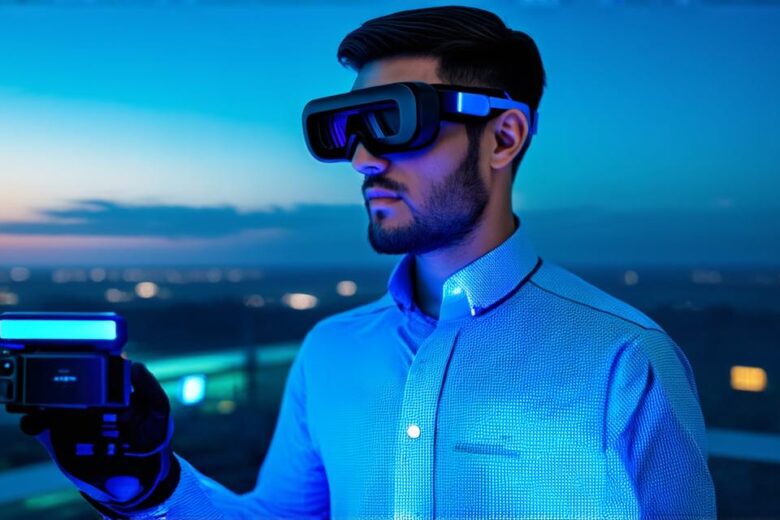Augmented reality (AR) and mixed reality (MR) are both immersive technologies that blend digital elements with the real world. While AR enhances the user’s experience of their physical environment by adding digital objects, MR takes this a step further by allowing users to interact with virtual objects in real-time. In this article, we will explore how MR builds upon AR and expands its capabilities.
AR vs. MR: what’s the difference?
AR is the technology that overlays digital information onto the user’s view of the physical world. This information can be in the form of images, text, or other digital objects. The user sees a real-world scene through their device’s camera, and then AR software adds digital elements to that scene. AR has been used for a variety of applications, including gaming, education, and marketing.
MR, on the other hand, is a more advanced form of AR that allows users to interact with virtual objects in real-time. MR uses sensors and cameras to track the user’s movements and then overlays digital objects onto their view of the physical world. These digital objects can be manipulated by the user, creating an immersive experience that blurs the line between reality and virtual reality.
How does MR build upon AR?
MR builds upon AR in several ways. First, it uses the same basic principles of overlaying digital information onto the real world. However, where AR stops at adding digital objects to the user’s view, MR takes things a step further by allowing users to interact with those objects.
This interaction is made possible through the use of sensors and cameras that track the user’s movements. For example, if a user reaches out to grab a virtual object in an MR experience, the software will use this input to adjust the object’s position and orientation in real-time. This creates a much more immersive experience for the user, as they are able to interact with virtual objects in a way that feels natural and intuitive.

Second, MR also expands upon AR by adding new dimensions to the user’s view of the physical world. While AR is limited to overlaying digital information onto a 2D view, MR can create a 3D environment that allows users to see objects from multiple angles and perspectives. This creates a more realistic and engaging experience for the user, as they are able to explore virtual objects in a way that feels like they are physically present.
Finally, MR also builds upon AR by incorporating new technologies such as haptic feedback and motion tracking. Haptic feedback allows users to feel physical sensations when interacting with virtual objects, creating a more immersive experience. Motion tracking allows the software to accurately track the user’s movements, enabling them to interact with virtual objects in a way that feels natural and intuitive.
Summary
In conclusion, mixed reality builds upon augmented reality by expanding its capabilities and taking the technology to new heights. MR enables users to interact with virtual objects in real-time, adds new dimensions to their view of the physical world, and incorporates new technologies such as haptic feedback and motion tracking. These advancements create a more immersive and engaging experience for the user, making MR an exciting and rapidly evolving field.
